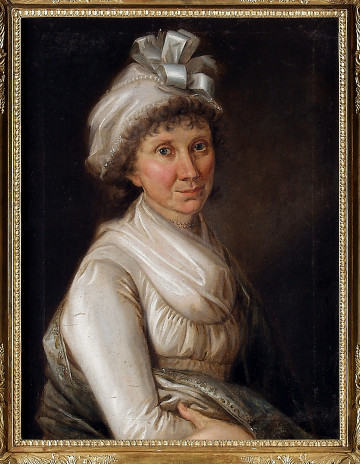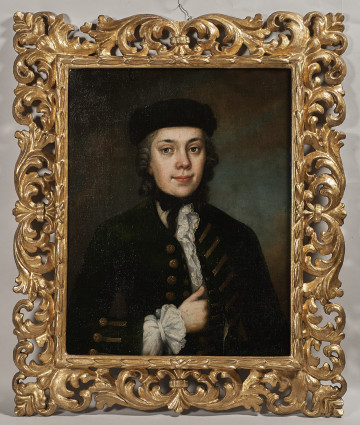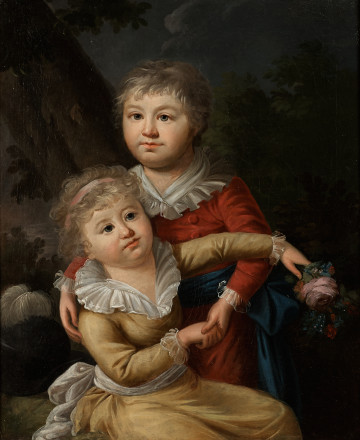
Portrait of Aleksandra Potocka, née Lubomirska
2nd half of the 19th century
Castle Museum in Łańcut
Part of the collection: Orient
Chinese censer with three legs represented as elephant heads. On the belly of the vessel, a decorated relief with a depiction of a t’ao t’ieh mask against the background of lei – wen animals, a motif imitating archaic bronzes from the Shang dynasty, ca. 1500–1028 B.C.E. The censer has two handles on the sides, stylised into the shape of elephant heads. The lid is convex, carved with flowers against an openwork background, topped with the figure of a mythical, one-horned animal, ch’i – lin. Underneath, four carved symbols, written in stylised seal script, unidentified. The censer is placed on a wooden openwork stand with geometric decoration. On top of the stand are round indentations for the legs of the censer. Bronze, chiselled casting, artificial patina in places. Place of manufacture – China. The censer is dated to the end of the 19th century. In China, there is a legend about the dragon Chi-lin, also known as Qi-Lin or Qilin. It is a mythical Chinese creature with the head of a dragon and the body of a horse, covered with fish scales. Also known as the “Dragon Horse”, according to legend, it appeared to uncorrupted officials, bringing them strength, energy, good health, and wealth; it is identified with loyalty and protection from evil spirits. During the Ming dynasty (1368–1644), Qilin was depicted as a creature with the head of a dragon and horns. Tāotiè is the Chinese name of the mythical monster and the ornamental motif characteristic for bronze vessels from the Shang and Zhou dynasties. Decorative ornaments (known as masks) or ceremonial (sacrificial) vessels show the face of the monster, whose image was intended to scare away thieves and those who would disturb the rituals. Both symbols that make up the name tāotiè contain an element meaning “to eat”; however, the word itself comes from the name of the Taotie monster in Chinese mythology. Censers for use in the home used small, concave charcoal briquettes. A corner of the briquette was lit, the briquette was placed in the censer, and the flame was extinguished. After the glowing embers encompassed the entire briquette, it was ready for incense to be placed on it and used.
Object type
Orient
Owner
Castle Museum in Łańcut
Identification number
Location / status

2nd half of the 19th century
Castle Museum in Łańcut

3. ćwierć XVIII wieku
Castle Museum in Łańcut

1. ćwierć XIX wieku
Castle Museum in Łańcut
DISCOVER this TOPIC
Castle Museum in Łańcut
DISCOVER this PATH
Educational path